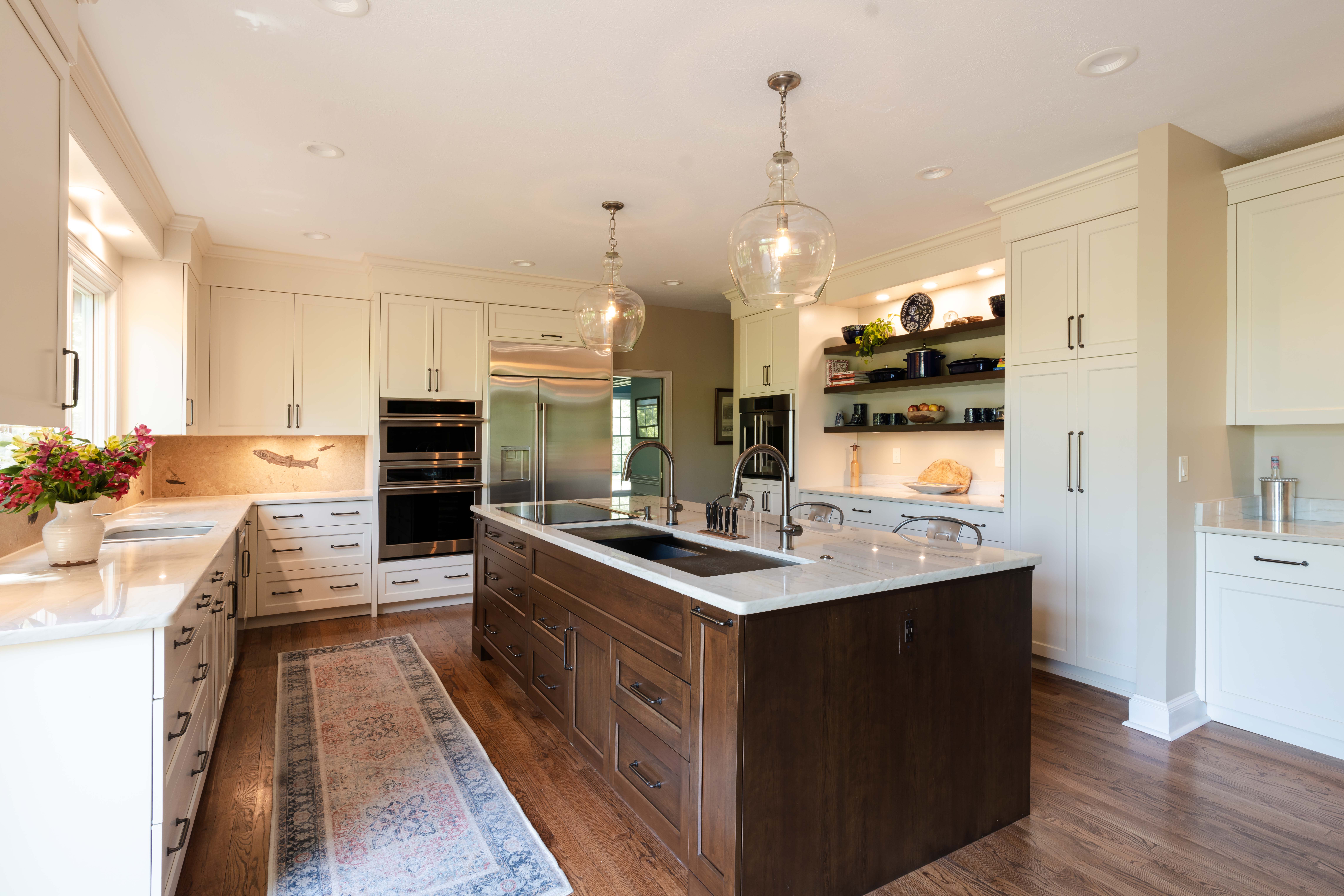Are you staying in your home after retirement? If you are, does your current home meet your future needs? The design of most American houses doesn’t accommodate older homeowners. So, you will probably need to modify your home in certain ways to be safer for you as you age. These modifications should follow universal home design so your house is usable and comfortable for everyone. The designers at Capozzi are masters of universal design because they hold Certified Aging in Place and Certified Living in Place credentials. With our expertise, we’ll define universal home design and provide examples so you can embrace living in place.
What Is Universal Design?
Universal design focuses on creating spaces that are accessible and functional for everyone, regardless of age or ability. Universal design isn’t just about making life easier for those with mobility challenges; it’s about ensuring that your home is welcoming for all.
Remodeling your home according to universal design principles allows you and your loved ones to live in place. To live in place, you must have a home that meets the evolving needs of you and your family. Such a home allows you to retain your independence as you age. Another term for staying in your home indefinitely is aging in place.
Universal design principles also account for multi-generational living. Multi-generational living is increasingly common as families come together to care for aging parents or adult children. If you’d like to remodel before bringing your loved ones into your home, you should know that universal home design makes the transition smoother for everyone involved.
What Are Some Examples of Universal Design for Living in Place?
First-Floor Suite
A first-floor bedroom and bathroom lets older family members reach their private living space without summiting the stairs. This space can apply universal design with easy-to-reach storage and accessible fixtures.
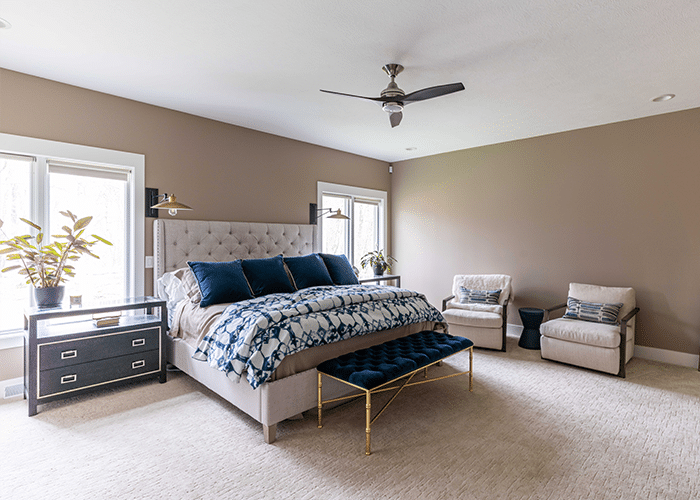
Kitchen Updates
For multi-generational households, a kitchen remodel might include lower countertops, pull-out shelves, and appliances with smart technology. We have countless ideas for making meal prep simpler for everyone.
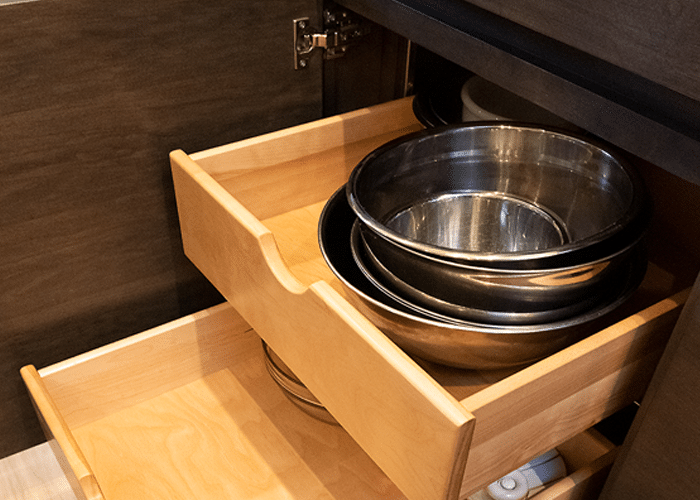
Accessible Spaces
If your parents are moving in with you, they’ll require easy access to daily essentials. Giving them their preferred level of accessibility may involve installing grab bars throughout the house, replacing door knobs with lever-style handles, changing lightswitches to rocker-style models, and more.
Wider Doorways and Hallways
Widening doorways and hallways is key to accommodating mobility aids like wheelchairs and walkers. More spacious doorways and hallways help everyone move around the home safely.
No-Step Entryways
Adding a no-step entryway can be a significant change, but the increased safety is worth it. We can achieve a no-step entry by installing a ramp or reconfiguring the front entrance.
How Much Does Universal Home Design Remodeling Cost?
The cost of remodeling for living in place or multi-generational living can vary depending on the project’s scope. We’ve supplied general estimates for certain projects and added a budget cushion for each to help you plan.
First-Floor Bedroom and Bathroom Addition
Adding a first-floor suite is one of the more costly modifications, likely requiring a budget of $100,000 or more. The exact amount depends on the complexity of the construction and finishing.
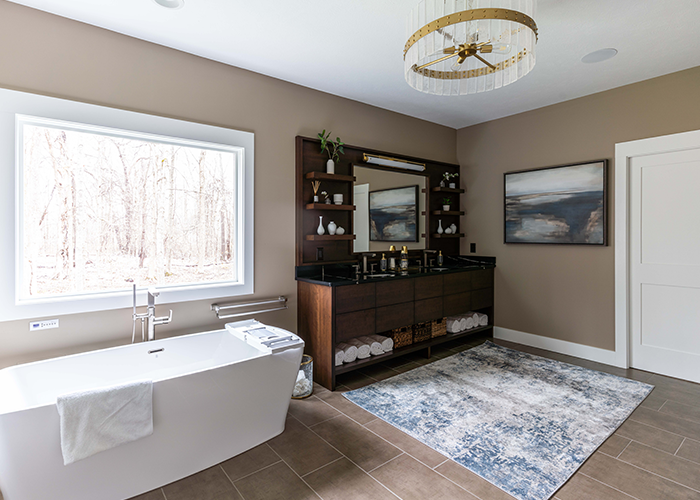
Kitchen Updates
A kitchen remodel incorporating universal design features ranges from $80,000 or more. This project could include lowering countertops, adding accessible cabinets, and integrating smart appliances.
Bathroom Modifications
A living in place bathroom remodel typically necessitates moderate to significant funding. Budgeting around $65,000 or more helps cover the costs of walk-in showers, grab bars, and other safety features.
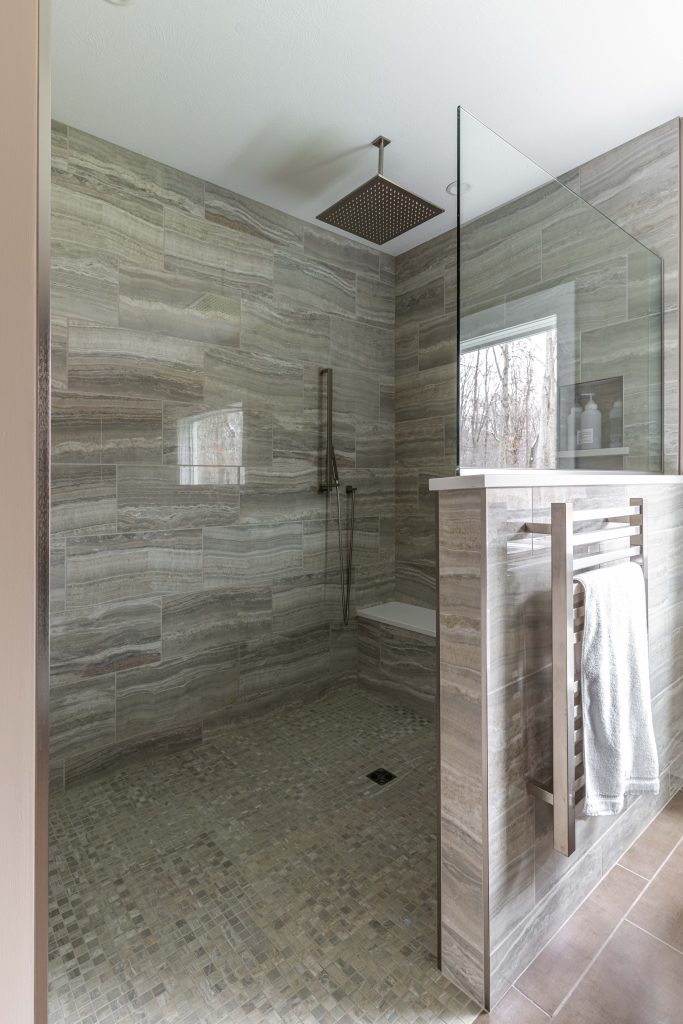
Widening Doorways
Widening doorways to accommodate mobility aids might add several thousand dollars per doorway. Planning for about $2,500 or more per doorway is advisable.
No-Step Entryways
Creating a no-step entryway could cost several thousand dollars. A budget of around $7,000 or more would be reasonable for this project.
What Are the Benefits of Home Remodeling with Universal Design?
Investing in universal home design for living in place offers significant financial and emotional benefits, such as:
- Increased Home Value: Homes with universal design features are in high demand as more buyers seek properties attuned to living in place. Your home will be more appealing to potential buyers in the future.
- Reduced Future Costs: By preparing your home now, you may avoid higher costs related to emergency remodels or assisted living facilities later. Living in place can also reduce ongoing care costs.
- Peace of Mind: The emotional return on investment is immeasurable. Knowing that your home is ready to support you and your family through the years brings calm and confidence. With universal design, your home will continue to be a haven of love and joy, no matter what life brings.
Who Specializes in Remodeling with Universal Home Design?
For many homeowners, staying in their homes after retirement or letting family members live with them is extremely important. They want to preserve the familiar, nurture relationships, and maintain a space where everyone feels cherished. With remodeling that implements universal design and prepares for multi-generational living, you can ensure your home remains warm and welcoming for years.
So, as you plan for the future, consider how your house can adapt to the developing needs of your family. Your home is more than just a place to live — it’s a sanctuary for memories and milestones. Embrace the opportunity to enhance it so you can be there as long as you want. Contact us to learn more about our universal design and living in place services.


